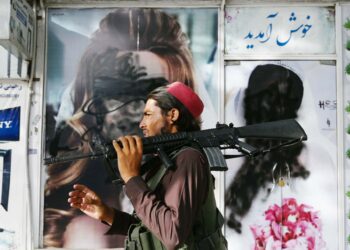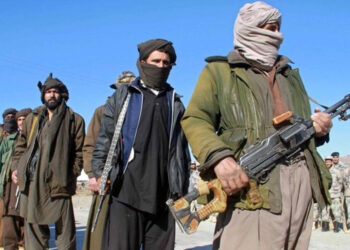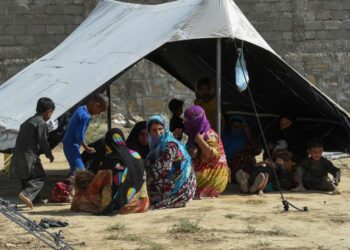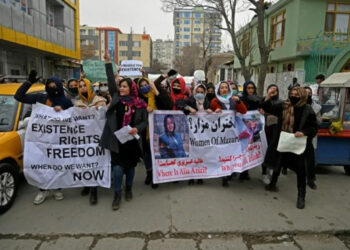KABUL, Afghanistan – Just weeks into the announcement of the new U.S. strategy for Afghanistan, a sudden surge in casualties on the war fronts and among civilians has overshadowed prospects for a peaceful resolution of the conflict in the country, at least for the time being.
In defiance of calls for peace talks, the Taliban waged at least two massive assaults on the security forces on Tuesday killing more than 70 people in Afghanistan, including university students, in two provinces located less than hundred miles from the capital city of Kabul.
In the wee hours on Tuesday, a Taliban suicide bomber blew up an armored vehicle seized from the security forces and packed with explosives at the entrance to the Andar district in central Ghazni province. The attack was followed by a gun battle between the militants and the members of the Afghan National Police guarding the small compound in the dusty village marred by the insurgency. Clashes continued till noon.
The provincial administration confirmed in a statement up to 30 people, mostly policemen, got killed in the assault. Taliban spokesman Zabihullah Mujahed claimed, however, that 44 policemen were killed and a large cache of arms and ammunition was confiscated.
As Afghans across the country were coming to terms with the saddening news from the remote Andar district, they were shocked by yet another, even deadlier blast in the southeastern Paktia province.
Two suicide car bombings took place in the area. They were aimed at the security personnel in the regional headquarters and training center of the ANP in Gardez city, less than 100 miles from Kabul. A truck and an armored vehicle packed with deadly explosives were rammed into the heavily guarded compound. Later, five militants wearing security forces’ uniforms sprayed bullets on anyone in their range.
The attack lasted from 09:30 local time (05:00 GMT) till noon and resulted in the death of 41 people, including many Paktia University students and local residents who had gathered at the nearby government building to obtain identity cards, passports and other documents.
Brig. Gen. Toryali Abdiani, the security chief for the province, got killed defending the ANP headquarters along with a number of guards, Deputy Governor Hidayatullah Hamidi told the Globe Post.
“Our brave special forces repulsed the attack, we have 41 martyrs and more than one hundred wounded,” he said.
Responding to a question in Kabul, Gen. Murad Ali Murad, the deputy minister for interior, asserted the armed rebels – an expression often used to describe the Taliban – and their foreign backers are under immense pressure from the Afghan and allied forces. That explains why they have chosen to carry out the attacks at the time when efforts for peace talks are gaining momentum, he argued.
Also on Tuesday, the U.S. Forces in Afghanistan reportedly carried out at least two deadly drone strikes in eastern Nangarhar province which borders Pakistan’s restive tribal belt, killing 23 suspected militants.
The operation followed some 751 air strikes conducted in September alone, according to a U.S. Air Forces Central Command report.
The new developments are taking place at the time when the U.S., China, Pakistan, and Afghanistan are set to resume talks under the stalled Quadrilateral Coordination Group framework aimed at reviving the peace process.
Both the Taliban and its backers, as well as the Afghan government supported by the U.S. and its allies, are seemingly pushing to have greater leverage for any potential breakthrough in talks, Brig. Mohammar Arif, a defense affairs analyst, told the Globe Post.
“No one is ready to give-up or enter any sort of truce with a weaker position, and that is evident as we see both sides on the offensives,” he said.
As the parties to the conflict embark on the warmongering spree, civilian seems to be bearing the brunt of the war that is now in its 17th year.
The UN Assistance Mission in Afghanistan has noted astonishing 52 percent surge in civilian casualties due to the air strikes in the country in the first nine months of this year.
From January 1 to September 30, 2017, UNAMA documented 8,019 civilian casualties, with 2,640 people dead and 5,379 injured, that represented an overall 6 percent decrease in such incidents compared to the same period in 2016.
Notwithstanding this overall decrease, UNAMA reiterated its concern at continued increases in civilian casualties from aerial attacks, particularly among women and children.
During the first nine months of 2017, the mission documented 466 civilian casualties, a 52 percent increase compared to the same period in 2016.






















